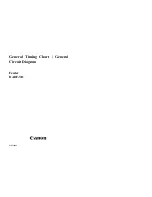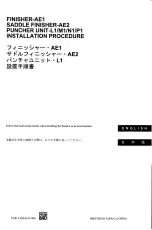
D12 Expert Series
page
8
TEACH-Mode Programming
Sensitivity is automatically set (and optimized) by “teaching” the sensor the light and
dark conditions, in TEACH mode. TEACH mode is accomplished by presenting each of
the two sensing conditions to the fiber optics. They may be presented in either order
(the light condition first, then the dark, or vice versa). When the button is clicked, the
sensor samples the sensing condition and registers it into memory. After the second
sensing condition is registered, the sensor automatically sets its sensitivity to the
optimum value for the application, and the sensor returns to RUN mode.
NOTE: There is a period of a few seconds at the end of TEACH mode when the display
is blank, before RUN mode begins.
Contrast Indication
When the push button is clicked to teach the second condition (see above), the
7-segment display flashes 1 to 7 LEDs three times to indicate relative contrast level
(see Figure 4). Contrast is the difference in light level between the two sensing
conditions. Higher contrast allows a higher sensitivity level, and, therefore, a higher
excess gain. In short, a high contrast level is directly related to sensing reliability, and
to the sensor’s ability to “forgive” subtle changes in sensing conditions.
(LEDs flash 3
times at end of
TEACH mode)
Relative Contrast
#1 (only)
Unacceptable
#1 and #2
Low
#1,2, and 3
Moderate
#1,2,3, and 4
Good
#1,2,3,4, and 5
Very Good
#1,2,3,4,5, and 6
High
#1,2,3,4,5,6, and 7
Very High
Push button
Indicator Status
Push and hold 2
seconds or longer
Current output settings
are displayed
Push and Hold
≥
2 Seconds
Two steady red LEDs indicate the output settings: light or dark
operate and output timing (0 or 40ms).
NOTE: The sensor continues to operate normally during the
display period. The display will automatically return to
RUN mode if the push button is not clicked within 10
seconds.
Double-click
ON indicator (green
LED) single-flashes
at 1 Hz
Green ON LED single-flashes at 1Hz and the 7-segment
display indicates relative received signal strength.
NOTE: There is no timeout for the TEACH mode sequence. To
escape from TEACH mode and return to RUN mode with
the previous setting, press and hold the push button for
2 seconds or longer.
Mode
Change from
RUN mode
to
OUTPUT
CONFIGURATION
(DISPLAY) mode
Change to
TEACH mode
When the push button is single-clicked, the 7-segment display will turn each of its
LEDs ON in sequence from #7 to #1, as the sensor samples and registers the first
condition. The green ON LED will double-flash at 1 Hz to indicate that the sensor is
ready to learn the second condition.
NOTE: There is no timeout for the TEACH mode sequence. To escape from TEACH
mode and return to RUN mode with the previous setting, press and hold the
push button for 2 seconds or longer.
When the push button is clicked, the 7-segment display will turn each of its LEDs
ON in sequence from #7 to #1, as the sensor samples and registers the second
condition. The 7-segment display will then flash 1 to 7 of its LEDs three times to
indicate relative sensing contrast. (See Figure 4, above right.)
If the contrast is acceptable, the sensor returns (after a few seconds) to RUN mode
with the new, optimized sensitivity setting. If the contrast is unacceptable (indicated
by only #1 LED of the 7-segment display flashing three times), the sensor returns to
TEACH mode condition 1.
NOTE: If the contrast is unacceptable, the ALARM output also pulses three times.
Double-Click
Sensing
Condition #1
Single-Click
Single-Click
Sensing
Condition #2
TEACH Condition #1
Present the first condition to the sensor and
single-click the push button
TEACH Condition #2
Present the second condition to the sensor and
single-click the push button
Figure 4. Contrast, as indicated by the
7-segment display






























